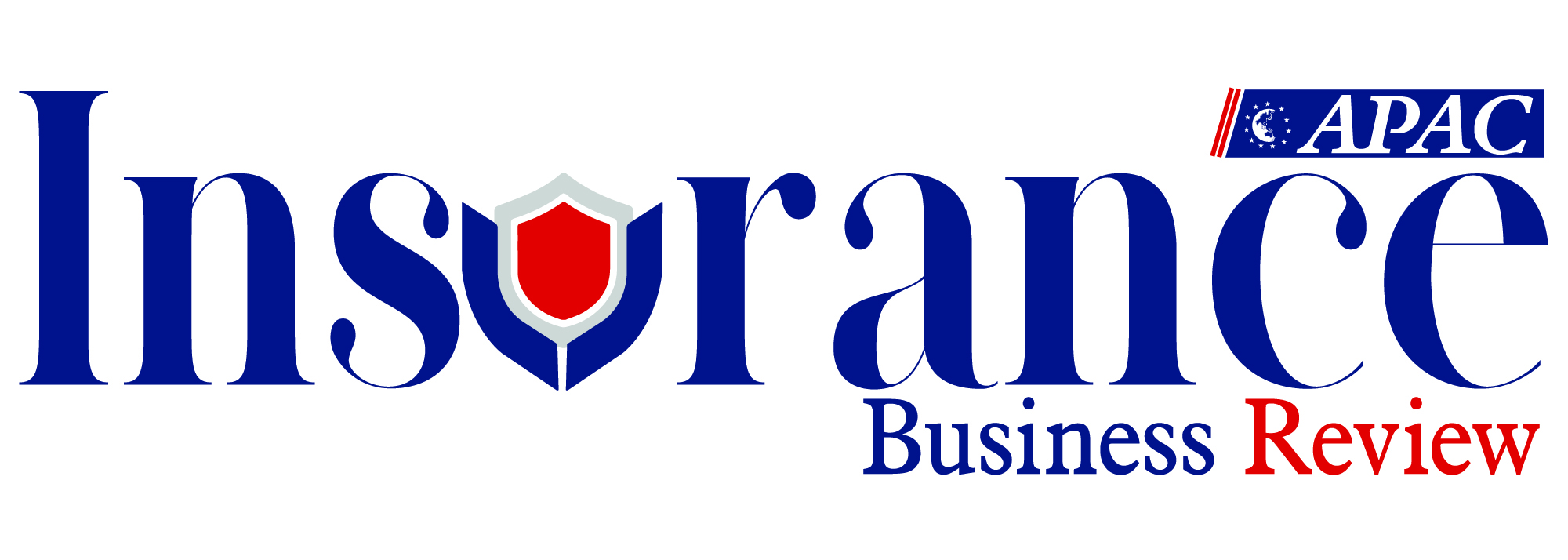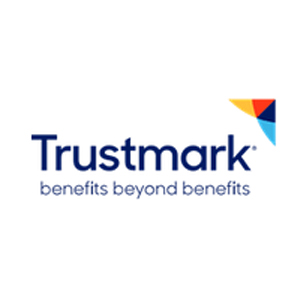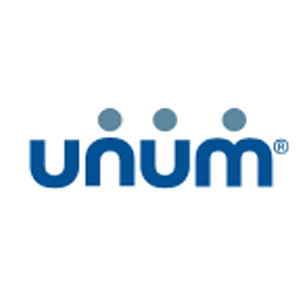\\\\\\\\\\ Top Companies in Insurance Benefits Solutions \\\\\\\\\
-
MetLife
MetLife is a global insurance and employee benefits provider offering life, dental, disability, and retirement solutions. It focuses on promoting financial health and well-being through innovative products like Health Savings Accounts, supporting individuals and businesses worldwide with trusted, comprehensive coverage.
-
Nippon Life Benefits
Nippon Life Benefits provides comprehensive employee benefits and insurance solutions, leveraging Nippon Life’s global expertise. It focuses on delivering tailored health, life, and retirement products that support workforce security and financial wellness across diverse markets.
-
Sana Benefits
Sana Benefits provides modern health insurance plans tailored for small businesses, including medical, dental, and vision coverage. It offers built-in care navigation and virtual services, helping employers save costs while delivering personalized, accessible healthcare benefits that improve employee satisfaction.
-
Trustmark Benefist
Trustmark Benefist offers a broad range of voluntary employee benefits such as dental, vision, life, and disability insurance. It partners with employers to design flexible, affordable plans that enhance employee well-being and retention, backed by strong customer service and innovative solutions.
-
Unum
Unum delivers employee benefits including disability, life, and leave management through advanced digital platforms. It simplifies HR processes, enhances employee experiences, and supports smooth transitions back to work, helping organizations manage risk and improve workforce well-being efficiently.
More in News
Securing Maritime Ventures with the Vital Benefits of Marine Insurance
Friday, October 03, 2025
FREMONT, CA: In the expansive and unpredictable world of maritime trade, marine insurance serves as a vital safeguard, providing broad protection against the many risks faced at sea. Mitigating Maritime Risks The primary benefit of marine insurance is its capacity to mitigate risks. Marine insurance provides a safeguard, ensuring that shipowners and cargo handlers can conduct their operations with the assurance that their vessels and goods are protected against a spectrum of maritime dangers. Financial Stability in Turbulent Waters Marine insurance policies offer a lifeline of financial security. The financial repercussions of loss or damage to ships or cargo can be devastating. Marine insurance acts as a bulwark against such financial strain, offering compensation covering repair costs, lost cargo, and liability claims. Facilitating Global Trade Marine insurance is not merely a protective measure but a catalyst for international trade. By providing transit goods coverage, marine insurance enhances the confidence of exporters and importers, encouraging trade flow across borders. It is an indispensable tool for businesses engaged in the global marketplace, where the assurance of coverage can mean the difference between a deal secured and an opportunity lost. Customizable Coverage for Diverse Needs The versatility of marine insurance lies in its customizable nature. Policies can be tailored to the insured's specific needs, whether for a single voyage or an open cover for multiple shipments. This flexibility allows businesses to choose the level of coverage that aligns with their risk profile and financial capabilities. Protection Beyond the Sea While the term 'marine' evokes images of the ocean, marine insurance extends its coverage beyond the blue horizon. It encompasses all modes of transportation, safeguarding goods transported by air, land, and rail. This comprehensive approach ensures that from the point of origin to the final destination, the value of the cargo is protected. Efficient Claims Settlement Claims settlement efficiency is paramount after a maritime incident. Marine insurance providers are equipped to handle claims with expertise, ensuring businesses can recover from losses swiftly and resume operations with minimal disruption. Risk Assessment and Management Marine insurance also plays a role in risk assessment and management. Insurers often provide expert evaluations of potential risks, advising on best cargo handling and transportation practices. This proactive approach to risk management can prevent losses before they occur, contributing to a safer and more secure trading environment.
The Future of Business Insurance and the Transition from Intermediaries to Strategic Partners
Thursday, October 02, 2025
The business insurance agency sector is undergoing a major transformation, fueled by technological innovation, shifting client expectations, and increasingly complex risk landscapes. Agencies are evolving from traditional intermediaries into strategic advisors, combining specialized expertise with digital tools to deliver customized solutions. Although digital platforms and direct-to-consumer models are gaining traction, the complexity of commercial risk—particularly for small and medium-sized businesses—still requires expert guidance beyond what automation can offer. Agencies remain trusted partners, helping clients navigate coverage options, assess risks, tailor insurance programs, and manage claims. With technology automating routine tasks, agents can devote more time to high-value, relationship-focused service, reinforcing the human connection central to their role. Digital Transformation and Operational Efficiency The digital imperative has profoundly impacted the operational fabric of business insurance agencies. Cloud-based agency management systems (AMS) are now standard, streamlining client data, policy administration, and commission tracking workflows. Automation, powered by Artificial Intelligence (AI) and Machine Learning (ML), is remodeling various aspects of agency operations. From automating routine customer inquiries through chatbots to accelerating underwriting processes and even aiding in fraud detection by identifying unusual patterns in claims data, AI is boosting efficiency and reducing manual effort. This allows agencies to process more business faster and more accurately, freeing up human capital for more complex problem-solving and relationship building. The adoption of digital tools extends to client-facing platforms, offering self-service portals for policy management, endorsements, and even initial claims submissions, catering to the growing demand for convenience and accessibility. Data Analytics: The New Frontier of Insight Data analytics has emerged as a cornerstone for competitive advantage in the business insurance agency space. Agencies increasingly leverage vast datasets to gain deeper insights into client behavior, market trends, and risk profiles. Predictive analytics allows for more precise risk assessment and pricing, enabling agencies to offer more tailored and competitive quotes. By analyzing historical claims data, agencies can identify patterns and trends, providing valuable insights for clients on risk mitigation strategies. Customer segmentation, driven by data, enables agencies to personalize communication and product offerings, enhancing client satisfaction and loyalty. Furthermore, data analytics plays a crucial role in identifying cross-selling and upselling opportunities, optimizing sales strategies, and improving overall operational efficiency by highlighting areas for improvement. This data-driven approach transforms agencies from reactive policy providers to proactive risk management consultants. Evolving Distribution Channels While the traditional agency model persists, the insurance distribution landscape is diversifying. The rise of "Insurtech" – technology-driven insurance solutions – has introduced new avenues for policy acquisition. This trend could disrupt the traditional agency model and present a collaborative opportunity for agencies. Many agencies are exploring hybrid models, combining traditional advisory services with robust online presences and digital self-service options. The focus is on creating an "omni-channel" experience, allowing clients to interact with the agency through their preferred method: direct conversation, email, or a digital portal. This adaptability ensures that agencies remain relevant in an increasingly digital-first world, catering to a broader spectrum of client preferences. Specialization and Niche Market Focus As the business risk environment becomes more complex, specialization is a growing trend among agencies. Rather than being generalists, many agencies focus on specific industries or lines of business, developing deep expertise in cyber insurance, professional liability, directors and officers (D&O) liability, or even niche sectors like renewable energy or emerging technologies. This specialization allows agencies to provide highly tailored advice and solutions, understanding their chosen markets' unique exposures and regulatory landscapes. This deep knowledge enhances their value proposition, enabling them to offer more comprehensive risk management strategies beyond just policy placement. It also fosters stronger client relationships, as agencies become indispensable partners in navigating industry-specific challenges. Client Acquisition and Retention Strategies Successful agencies prioritize sophisticated client acquisition and retention strategies in a competitive market. Digital marketing, including search engine optimization (SEO), content marketing, and targeted social media campaigns, is vital for reaching new prospects. Agencies also emphasize establishing robust referral networks and cultivating a strong brand presence. For retention, exceptional customer service remains paramount. This includes personalized communication, proactive policy reviews to ensure adequate coverage, and swift, empathetic support during the claims process. Leveraging technology to automate reminders for renewals, birthdays, and other key client events contributes to a more engaged and loyal client base. The focus is building long-term relationships through consistent value delivery and demonstrating a genuine understanding of the client's evolving needs. Navigating the Regulatory Environment The business insurance agency industry operates within a continually evolving regulatory landscape. Agencies must remain vigilant in understanding and adhering to various state and federal regulations about licensing, data privacy, market conduct, and financial solvency. The increasing adoption of AI and other advanced technologies also brings new regulatory considerations, particularly regarding data usage and algorithmic fairness. Agencies are investing in robust compliance frameworks, regular employee training, and leveraging technology to automate compliance processes. However, navigating this complex regulatory environment is not without its challenges. Proactive engagement with regulatory changes and a commitment to ethical practices are crucial for maintaining trust and ensuring sustainable growth in this highly regulated sector. The future of the business insurance agency is one of continued evolution and adaptation. Agencies that embrace technology, leverage data analytics, and deepen their specialization will be best positioned for success. The emphasis will shift towards being strategic risk advisors, offering holistic solutions that integrate insurance with broader risk management services. The human element of trust, empathy, and expert guidance will remain central. Still, it will be augmented and amplified by intelligent digital tools, allowing agencies to serve a broader range of clients with greater efficiency and personalization. The industry is poised for an exciting period of innovation, where agencies that seamlessly blend human expertise with technological prowess will define the new standard of excellence.
Microinsurance & Financial Inclusion: New Frontiers for Impact in Canada
Thursday, October 02, 2025
Fremont, CA: Canada, often lauded for its robust financial system and high rates of financial inclusion, still faces pockets of underserved populations who could significantly benefit from tailored financial products. Among these, microinsurance is emerging as a critical tool, offering new frontiers for impact in enhancing financial resilience and truly embedding inclusion across all segments of Canadian society. While Canada features over 99 percent of its adult population having access to a financial account, certain groups, including low-income individuals, precarious workers, those in remote and Indigenous communities, and new immigrants, often encounter barriers to accessing conventional insurance products. These barriers can range from high premiums and complex policy terms to a lack of awareness and trust in traditional financial institutions. This is where microinsurance, with its affordable premiums, simplified structures, and relevant coverage, can play a transformative role. The Canadian Landscape and the Promise of Microinsurance Traditionally, microinsurance has been more prevalent in developing countries, designed to protect vulnerable populations against unforeseen risks, such as health emergencies, crop failures, or property damage. However, its principles of accessibility, affordability, and appropriateness are increasingly relevant in a developed nation like Canada. Key areas where microinsurance can deliver meaningful impact in Canada include protecting precarious workers, enhancing community resilience, bridging health coverage gaps, supporting small businesses, and promoting financial literacy. With the growth of the gig economy and temporary employment, a significant portion of the workforce faces unstable incomes and limited access to traditional benefits. Microinsurance can offer crucial protection against income loss resulting from illness, injury, or unforeseen events. In remote and Indigenous communities, where access to financial services is often limited and exposure to climate-related risks is heightened, microinsurance—particularly parametric and weather-indexed products—can enable rapid payouts after extreme weather events, thereby supporting a faster recovery. Despite Canada’s universal healthcare system, out‑of‑pocket expenses and coverage gaps remain a challenge for many low‑income individuals; micro health insurance can help offset these costs and improve access to essential services. Micro, small, and medium-sized enterprises (MSMEs), which play a vital role in the Canadian economy, often struggle with risk management and financial resilience. Tailored microinsurance solutions can protect them against business interruption, property damage, or liability, fostering greater stability and growth. Microinsurance represents a significant new frontier for impact in Canada, offering a powerful mechanism to deepen financial inclusion and build resilience among those who have traditionally been excluded from conventional financial services. By embracing technological innovation, fostering strong public-private partnerships, and prioritizing financial literacy, Canada has the opportunity to lead the way in demonstrating how microinsurance can be a cornerstone of a truly inclusive and equitable monetary system for all its citizens. The journey is ongoing, but the potential for positive social and economic impact is immense.
The Strategic Importance of Agility in Reinsurance Advisory Services
Thursday, October 02, 2025
Fremont, CA: In the intricate and ever-evolving landscape of global risk, reinsurance plays a pivotal role in stabilizing the insurance industry and fostering economic resilience. For cedents – the primary insurance companies – navigating this complex terrain effectively often necessitates the expertise of reinsurance advisory services. In an era defined by rapid technological advancements, shifting regulatory frameworks, and unforeseen global events, the strategic importance of agility within these advisory services has never been more pronounced. The Imperative for Agility in Reinsurance Advisory The accelerating pace of risk evolution demands swift, forward‑looking strategies. Climate change introduces unprecedented weather-related exposures, cyber threats advance at an alarming rate, geopolitical tensions generate sudden market volatility, and global health crises can reshape entire industries almost overnight. Advisors must now rapidly assess these emerging risks, evaluate their impact on cedents’ portfolios, and craft innovative risk transfer solutions in real time—anything less risks leaving clients exposed to significant financial shocks. Equally transformative is the proliferation of data and advanced analytics. In an era of vast datasets—ranging from granular policyholder information to sophisticated catastrophe models and economic forecasts—agile advisors leverage artificial intelligence and machine learning to distill insights, quantify exposures with precision, and anticipate trends. This data-driven approach enables the design of highly customized, forward-thinking reinsurance programs. Adding to the complexity is an ever-shifting regulatory landscape. New solvency requirements, privacy mandates, and capital rules frequently emerge, often with cross‑border implications. Advisors must be proactive in helping cedents navigate these requirements, ensuring compliance while optimizing capital allocation to maintain a competitive edge. Simultaneously, the rise of Insurtech is reshaping the market with new business models, distribution channels, and risk transfer mechanisms such as parametric insurance and blockchain‑enabled platforms. Advisors who adopt an agile mindset can integrate these innovations into reinsurance structures, offering clients solutions that are more efficient, transparent, and aligned with emerging risks. Growing competition and heightened client expectations demand speed, responsiveness, and foresight. Cedents increasingly value advisors who not only provide technical expertise but also anticipate challenges and deliver timely, actionable strategies. In this evolving environment, agility is no longer a differentiator—it is a prerequisite for success. Manifestations of Agility in Reinsurance Advisory Agility enables rapid risk assessment and structuring, where advisors swiftly evaluate a cedent’s portfolio against emerging risks and design optimal reinsurance frameworks—be they traditional, facultative, or alternative risk transfer (ART) solutions—with speed and precision. It also drives market engagement, as advisors proactively interact with a broad spectrum of reinsurers, remain attuned to shifting appetites, and leverage relationships to secure favorable terms in volatile market conditions. Agility fosters iterative solution development, moving beyond rigid, standardized approaches to continuously refine reinsurance programs in response to market feedback and changing client needs. The seamless adoption of advanced technologies—spanning data analytics, modeling, communication, and process automation—further enhances efficiency and delivers sharper insights. Internally, cross-functional collaboration among actuarial, legal, broking, and analytics teams ensures that complex challenges are addressed with diverse expertise. The strategic importance of agility in reinsurance advisory services cannot be overstated. It is no longer a desirable trait but a fundamental requirement for success. Companies that embrace agility, invest in technology, and empower their teams will effectively guide clients through global risks, ensuring long-term resilience. For cedents, partnering with an agile reinsurance advisor is a strategic imperative that directly contributes to their financial stability and competitive advantage.
The Role of Technology in Driving Innovation Among Third-Party Administrators in the Digital Age
Wednesday, October 01, 2025
Fremont, CA: In today’s rapidly evolving business landscape, third-party administrators (TPAs) are essential in handling a wide range of operational functions for organizations across industries. From claims processing to customer service, TPAs are leveraging advanced technologies to enhance efficiency, reduce costs, and improve client satisfaction. Integration of Artificial Intelligence and Automation One of the most significant advancements being embraced by TPAs is artificial intelligence (AI) and automation. TPAs can streamline processes, minimize human errors, and enhance decision-making capabilities by integrating AI-driven solutions into their operations. For instance, AI algorithms can analyze large datasets to identify patterns and trends, which is invaluable for risk assessment and fraud detection. Automation tools also allow TPAs to handle repetitive tasks more efficiently. For example, robotic process automation (RPA) can significantly speed up claims processing by automating data entry and document management. This frees up human resources to focus on more complex activities and speeds up turnaround times, leading to higher customer satisfaction. As a result, clients receive quicker responses and resolutions, reinforcing trust in the services provided by TPAs. Predictive analytics enables TPAs to anticipate client needs and behaviors. By analyzing past interactions and outcomes, TPAs can optimize service delivery and tailor offerings to meet each client's unique requirements. Such personalization is becoming increasingly critical in an age where customers expect bespoke services, adding significant value to the TPA's propositions. Embracing Cloud Computing and Data Security Another transformational technology making waves in the TPA sector is cloud computing. With the rise of remote work and digital engagement, TPAs are harnessing the power of the cloud to improve accessibility, scalability, and cost-effectiveness. Cloud platforms allow TPAs to store and manage vast amounts of data securely, enabling real-time access to information anywhere in the world. This is particularly important for TPAs managing sensitive client data, as it supports seamless collaboration among teams and enhances operational resilience in the face of disruptions. Cloud computing facilitates the integration of various software solutions and applications, fostering an ecosystem that can continually adapt to client needs. For example, TPAs can seamlessly incorporate new compliance management tools, client communication, and data analytics into their existing cloud infrastructure. This adaptability ensures that TPAs remain competitive and responsive to the evolving regulatory landscape and market demands. However, as TPAs embrace cloud solutions, the importance of data security cannot be overstated. With increasing cyber threats, TPAs must invest in robust cybersecurity measures to protect sensitive information. This includes employing advanced encryption methods, multi-factor authentication, and continual monitoring for unusual activities. Ensuring the safety of client data not only builds trust but also helps maintain compliance with regulations, which is a critical aspect of TPA operations.
How Subrogation Helps Insurers Protect Financial Integrity
Wednesday, October 01, 2025
The insurance industry operates within a complex, highly regulated ecosystem focused on risk assessment, policy delivery, and effective claims management. While policyholders rely on insurers for financial protection, insurers must strategically manage risks to ensure long-term stability and efficiency. Subrogation and recovery—though often overlooked—play a vital role in this balance. By enabling insurers to recoup costs from third parties responsible for losses, subrogation promotes fair financial accountability, reduces unnecessary expenditures, and supports the overall sustainability of the insurance sector. At its core, subrogation is the legal right of an insurer, acquired from the policyholder after a claim is paid, to pursue reimbursement from an at-fault party. This allows the insurer to "step into the shoes" of the insured and take legal or financial action to recover expenses incurred. Subrogation claims arise across various lines of insurance, particularly in property and casualty coverage, including auto accidents, residential fires, construction defects, and water damage claims. For example, if a policyholder experiences fire damage due to a neighbor’s negligence, the insurer may cover the loss and seek recovery from the responsible party. Similarly, in auto insurance claims, an insurer may initially compensate the policyholder for vehicle damages and later recover costs from the at-fault driver or their insurance provider. These efforts ensure that losses are reasonably assigned to responsible parties rather than increasing costs for insurers and policyholders. Expertise Driving Effective Subrogation The effectiveness of a subrogation and recovery firm depends on a combination of legal knowledge, investigative acumen, and negotiation skills. Attorneys specializing in insurance law are critical in interpreting policies, assessing fault, and crafting recovery strategies. Their command of procedural rules allows them to navigate complex claims with precision. Beyond legal expertise, thorough investigative capabilities are essential in determining liability and strengthening recovery cases. To substantiate recovery efforts, subrogation professionals analyze claims data, physical evidence, and expert evaluations. Strong negotiation skills further enhance outcomes, allowing firms to secure settlements that offset insurers’ losses while maintaining efficiency. The Role of Technology in Subrogation Technology has revolutionized the subrogation landscape, allowing firms to enhance efficiency and optimize recovery outcomes. Advanced software platforms analyze patterns in claims data, identifying high-probability recovery opportunities with greater accuracy. Predictive analytics enables insurers to assess the likelihood of successful subrogation efforts, refining case strategies accordingly. Automation is pivotal in streamlining administrative tasks, reducing manual workload, and improving workflow efficiency. Claim tracking tools give insurers real-time visibility into subrogation progress, ensuring strategic alignment in financial recovery efforts. Artificial intelligence-driven algorithms also assist in analyzing liability scenarios, offering data-backed insights to support negotiation and litigation decisions. Effective subrogation has a direct financial impact on insurers, reducing claims expenditures and improving loss ratios. By recovering costs from responsible parties, insurers maintain economic stability and minimize the burden on policyholders. This efficiency helps stabilize premium rates, ensuring affordability while preserving comprehensive insurance coverage. Beyond financial benefits, subrogation promotes accountability and encourages preventive measures among businesses and individuals. When entities recognize the economic consequences of negligence or inadequate risk management, they are more likely to implement safety protocols, minimize liability exposure, and adhere to industry standards. These proactive measures contribute to overall risk mitigation and support industry-wide sustainability. Subrogation laws vary across jurisdictions, requiring insurers and subrogation firms to stay informed on evolving legal frameworks. Comparative fault rules determine how liability is apportioned, influencing recovery strategies. The made-whole doctrine, a key principle in subrogation, dictates whether insurers can pursue recovery before fully compensating policyholders. Additionally, anti-subrogation statutes restrict specific claims, ensuring equitable recovery practices. To navigate these complexities, subrogation firms must remain adaptable and compliant with legal mandates. Continuous monitoring of legislative changes and judicial interpretations is essential for optimizing recovery efforts while maintaining industry integrity. Strategic Partnerships in Subrogation Subrogation firms often operate on a contingency fee basis, aligning their financial interests with those of insurers. This model incentivizes proactive recovery efforts and ensures that subrogation specialists remain committed to securing reimbursements efficiently. By fostering strong partnerships, insurers maximize their financial stability while enhancing operational efficiency in claims resolution. Collaboration between insurers and subrogation firms extends beyond financial recovery and strengthens overall risk management strategies. Lessons learned from subrogation cases inform underwriting practices, claims processing improvements, and industry-wide risk mitigation approaches. This synergy reinforces insurers’ ability to anticipate and address emerging risks effectively. As legal landscapes evolve and technological advancements reshape the industry, subrogation and recovery firms will play an increasingly vital role in ensuring financial sustainability within insurance operations. Their contributions—from meticulous investigations to strategic litigation management—bolster insurers' financial health and promote fairness in cost allocation. Integrating AI-driven analytics, automated recovery workflows, and evolving regulatory frameworks will shape the future of subrogation, ensuring efficiency and transparency in insurance financial recovery processes. As insurers adapt to a rapidly changing risk environment, subrogation will remain a fundamental pillar in supporting industry stability, optimizing claims resolutions, and reinforcing accountability in financial liability assignments.
















